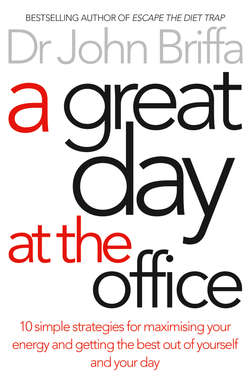Читать книгу A Great Day at the Office: 10 Simple Strategies for Maximizing Your Energy and Getting the Best Out of Yourself and Your Day - Dr. Briffa John - Страница 35
What On Earth Did We Eat?
ОглавлениеWe cannot know for sure what our oldest ancestors ate prior to the invention of agriculture, and this no doubt would also have varied quite a bit according to geography: individuals from colder climes would generally have had to rely more on hunted and fished foods than those living in warmer parts of the world where edible fruits and vegetables were more abundant.
One way to get a more precise picture of our ancestral diet is by looking at the diets of traditional, modern-day hunter-gatherers. When this has been done, it turns out that the percentage of calories coming from hunted and fished foods ranges from about 50 per cent in, say, areas of tropical grassland, to about 90 per cent in the cold and relatively barren tundra.20 Also, in this research of over 200 hunter-gatherer populations, not one was found to be vegetarian.
It seems that flesh foods, including red meat, are a fundamental part of the human diet. Yet we are usually warned off red meat, as well as another ‘primal’ animal food – eggs. The case against these foods is based on the fact that they are rich in cholesterol and so-called ‘saturated fat’, which are said to ‘clog the arteries’. Saturated fat, along with other fats, is also said to be inherently fattening.
While red meat and eggs have been some of the most vilified foods of all, wouldn’t evolutionary theory suggest that there is little to be concerned about here? Either this concept holds true, or these foods are genuinely unhealthy: it can’t be both. So, which is it?
As we did with carbohydrate, let’s assess the impact of dietary fats and cholesterol on health using science and published research.
